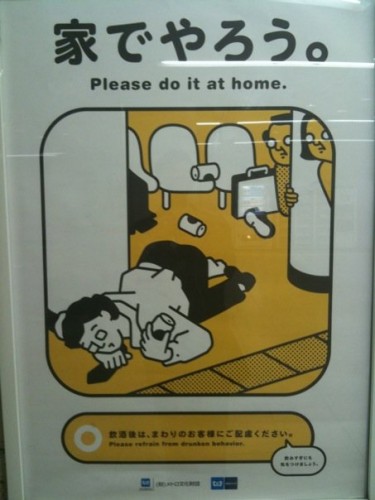I’ve been in Dubai for almost two months now, and despite leaving Japan, everyday involves speaking, reading and writing Japanese in my personal and professional life. Since arriving I’ve probably met more than a hundred Japanese nationals here, such as company employees, government bureaucrats, waitresses and cooks at Japanese restaurants, and the wives and school-aged children that have accompanied many of them. That’s several percentage points of the whole Japanese population here — according to the local Japanese Consulate General, there are approximately 3,000 Japanese nationals living in Dubai.
The reaction to a Japanese-speaking non-Japanese person is overwhelmingly positive, and I have found it very easy to befriend Japanese nationals on that basis. I think one reason for this is the underwhelming penetration of English language proficiency in the Japanese community here, and the consequent loneliness and insular community that arises thereto.
It’s one thing when I meet Americans and Brits living in Japan who never exert even a cursory effort to learn the Japanese language. I’m disappointed by these types of people, but I understand that English is the lingua franca of the world, the lowest common denominator of language, that people can expect to use for communication in most cities of the world. I know people who have lived in Japan for years, knowing only English, and who have still been able to live a full life in Japan and enjoy all the major tourist locations such as Kyoto, Hakone, Nikko, and elsewhere.
Here in Dubai, I witness the same phenomenon — I meet Japanese people who have lived in Dubai for years and who can barely order food from a menu or instruct a cab driver. This is a city that follows the 21st century lingua franca — 90% of the metropolitan population is foreign, and the common language between Lebanese, Indians, Brits, Egyptians, Iranians, Chinese, Kenyans, South Africans, Pakistanis, Greeks, Afghanis, and every other type of person you can imagine is English.
It’s one thing if a 30 year-old Japanese housewife can’t learn basic English communication after a few year in Dubai. That’s disappointing but understandable. But I’m truly shocked when I meet kids of the ages of 7 or 10, who have lived in Dubai for a year or two, and who have the potential to truly learn English like a native, and yet who can barely muster a sentence in English.
The blame lies squarely with the community and the education. The kids live in a Japanese community, attend Japanese schools that follow an ordinary Japanese curriculum, and basically have to study English in their spare time if they want to learn. And the general lack of English ability by many here has created a highly insular community. The Japanese tend to live in or around the Hyatt Regency, which offers serviced apartments for individuals and families, a supermarket with a small Japanese corner, and a genuine Japanese restaurant. Many other people live in the nearby neighborhood, and most of the authentic Japanese restaurants are in that area. With most Japanese socially cut-off from the rest of Dubai’s expat community, the result is a gossip network akin to a small inaka community. I met a bureucrat working at JETRO who had heard of me from his neighbor before we met — which we forensically determined was derivative to at least the fourth degree, with the information genesis beginning in a meeting that happened merely days earlier.
On the one hand, from a selfish perspective, this is great for me and has created all sorts of opportuities. But it’s also tragic that the Japanese, despite being very well educated and comfortably middle class for several generations, are so culturally isolated in a city where people gather from across the world.



